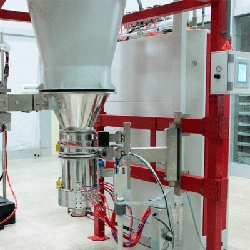Content Menu
● What Is Powder Coating and Why Is Particle Size Important?
>> The Role of Particle Size in Powder Coating Quality
● How Powder Sieves Improve Powder Coating Consistency
>> Removal of Oversize Particles
>> Prevention of Agglomeration and Clumping
>> Ensuring Uniform Particle Size Distribution
>> Enhancing Efficiency and Reducing Waste
● Key Features of Effective Powder Sieves for Coating Applications
>> High-Energy Vibratory Sieves
>> Durability and Low Maintenance
>> Customizable Screen Sizes and Capacities
● Practical Benefits of Using Powder Sieves in Manufacturing
>> Enhanced Product Quality
>> Minimizing Equipment Issues
>> Safer and Cleaner Work Environment
● How to Choose the Right Powder Sieve for Your Coating Needs
>> Consider Particle Size Requirements
>> Match Throughput to Production Volume
>> Evaluate Maintenance and Operational Features
● The Continuous Role of Sieving Beyond Initial Powder Production
● Frequently Asked Questions
Powder sieves play a pivotal role in ensuring the quality and consistency of powder coating processes. They are essential tools that help control the particle size distribution of powders used in coating applications, directly impacting the final finish, durability, and efficiency of powder coatings. This article explores why powder sieves are indispensable, how they contribute to powder coating performance, and what to consider when selecting and using them.

What Is Powder Coating and Why Is Particle Size Important?
Powder coating is a dry finishing process widely used in automotive, household appliances, industrial equipment, and consumer products. It provides a durable, uniform, and environmentally friendly coating by applying fine powder particles that fuse upon curing.
The Role of Particle Size in Powder Coating Quality
The uniformity and purity of powder particles are critical for a high-quality finish. Particles that are too large can clog spraying equipment, while overly fine particles or agglomerates may cause uneven coverage or defects on the surface. Proper particle size control ensures smooth finishes, optimal adherence, and consistent appearance.
Sieving removes oversize particles and impurities to maintain particle size distribution within narrowly defined limits, enhancing the coating's surface quality and performance.
How Powder Sieves Improve Powder Coating Consistency
Removal of Oversize Particles
Powder sieves filter out large particles and lumps formed during powder production or from recycled overspray. Oversize particles can cause clogging of spray guns and uneven powder flow, resulting in defects like rough texture or incomplete coverage.
Prevention of Agglomeration and Clumping
Sieving breaks up minor clumps, ensuring powders remain free-flowing and easy to apply. This helps maintain consistent spray patterns and prevents problems such as poor adhesion or patchy finishes.
Ensuring Uniform Particle Size Distribution
Sieving helps maintain a tight particle size distribution, which is crucial for achieving the desired film smoothness and gloss level. Manufacturers often select sieve mesh sizes (e.g., around 100 to 125 microns) to filter powders precisely, balancing smoothness and minimal waste.
Enhancing Efficiency and Reducing Waste
By removing unsuitable particles and reclaiming overspray powder through sieving, manufacturers can recycle material efficiently, minimizing waste and reducing production costs.
Key Features of Effective Powder Sieves for Coating Applications
High-Energy Vibratory Sieves
Advanced sieving machines, such as high-energy vibratory sieves, prevent mesh blinding (clogging) by continuously vibrating to keep powder moving. This ensures uninterrupted and thorough particle separation, improving throughput without compromising accuracy.
Durability and Low Maintenance
Industrial sieves designed for powder coatings are built to withstand the abrasive nature of powders, reducing downtime and maintenance needs for manufacturers.
Customizable Screen Sizes and Capacities
Manufacturers can choose sieve mesh sizes tailored to their particular powder specifications and production volumes, ensuring precise control over coating quality.
Practical Benefits of Using Powder Sieves in Manufacturing
Enhanced Product Quality
Consistent particle size leads to uniform coatings, better visual appeal, improved resistance to wear and corrosion, and longer-lasting finishes.
Minimizing Equipment Issues
By filtering out problematic particles, powder sieves reduce spray gun clogging and equipment downtime, improving overall manufacturing efficiency.
Safer and Cleaner Work Environment
Sieving powders into pastes or using sieves to reduce dust also minimizes airborne powder particles, enhancing safety for workers handling coatings.
How to Choose the Right Powder Sieve for Your Coating Needs
Consider Particle Size Requirements
Select a sieve mesh size based on the powder's targeted particle size distribution and desired finish quality.
Match Throughput to Production Volume
Choose sieves with capacities that align with your production demands to maintain efficiency without bottlenecks.
Evaluate Maintenance and Operational Features
Machines that offer easy cleaning, mesh replacement, and anti-blinding capabilities reduce downtime and labor costs.
The Continuous Role of Sieving Beyond Initial Powder Production
Sieving is not only important before powder leaves the mill but also critical during powder reclaim processes where overspray is collected and recycled. This ongoing sieving maintains powder quality throughout the coating lifecycle and reduces material costs.
Frequently Asked Questions
Q1: What happens if powder coatings are not sieved properly?
A1: Without proper sieving, oversized particles and clumps can clog spray equipment, cause uneven coating layers, reduce adhesion, and result in a rough or defective finish.
Q2: How often should powder coating powders be sieved?
A2: Powders should be sieved both after initial production and periodically during reclaim processes to maintain consistent particle size and prevent contamination.
Q3: What sieve size is recommended for smooth powder coating finishes?
A3: Typically, sieve mesh sizes around 100 to 125 microns are used, but this depends on the powder formulation and desired finish quality.
Q4: Can sieving powders improve health and safety during coating?
A4: Yes, sieving reduces dust and airborne particles, which lowers inhalation risks and creates a cleaner work environment.
Q5: Are vibratory sieves better than traditional sieves for powder coating?
A5: Vibratory sieves prevent mesh clogging and provide efficient, continuous sieving suitable for fine powders, making them superior for many coating applications.

[1] https://elcanindustries.com/blog_posts/powder-coating-sieves-what-are-the-pros-and-cons-heres-what-you-need-to-know/
[2] https://www.scribd.com/document/794331038/%E6%89%98%E7%A6%8F%E5%BF%85%E5%A4%87%E8%AF%8D%E6%B1%87%E5%88%86
[3] https://pflaumer.com/the-benefits-and-importance-of-using-molecular-sieve-paste-in-high-performance-coatings/
[4] https://www.farleygreene.com/blog/sieving-for-dry-powder-coatings/
[5] https://www.pfonline.com/articles/proper-sieve-size-for-powder-coatings-smooth-results
[6] https://www.russellfinex.com/en/case-studies/powder-coating-sieving-technology/
[7] https://www.russellfinex.com/en/demonstration-videos/sieving-powder-coatings/
[8] https://www.ramseierkoatings.com/how-to-choose-the-right-powder-sieve-for-high-efficiency-coating.html
[9] https://www.tiger-coatings.com/us-en/what-is-powder-coating
[10] https://www.powdercoatedtough.com/News/ID/5425/Powder-Coating-Storage-Best-Practices-for-Longevity-and-Performance
Hot Tags: China, Global, OEM, private label, manufacturers, factory, suppliers, manufacturing company










































 .
. 